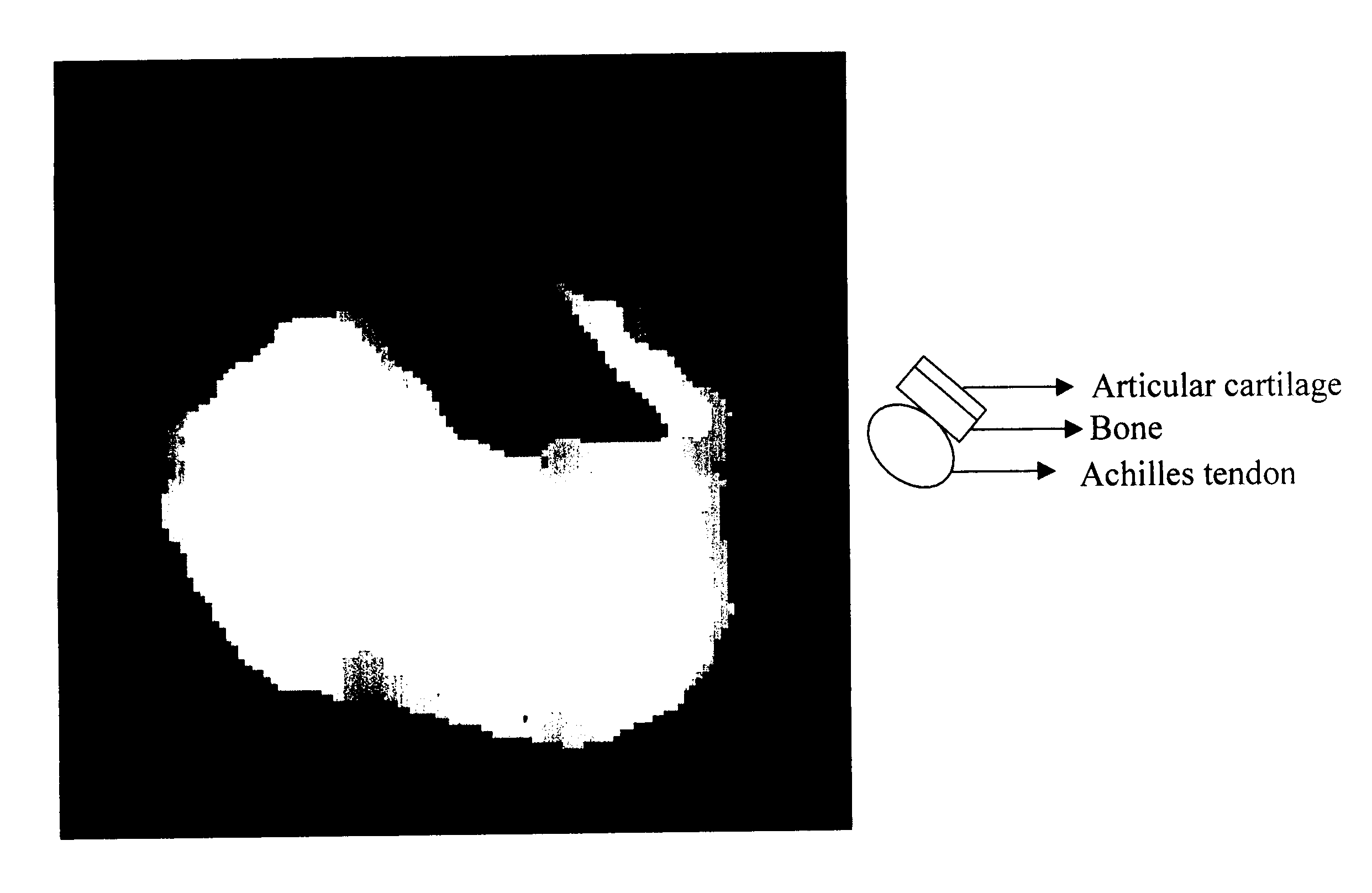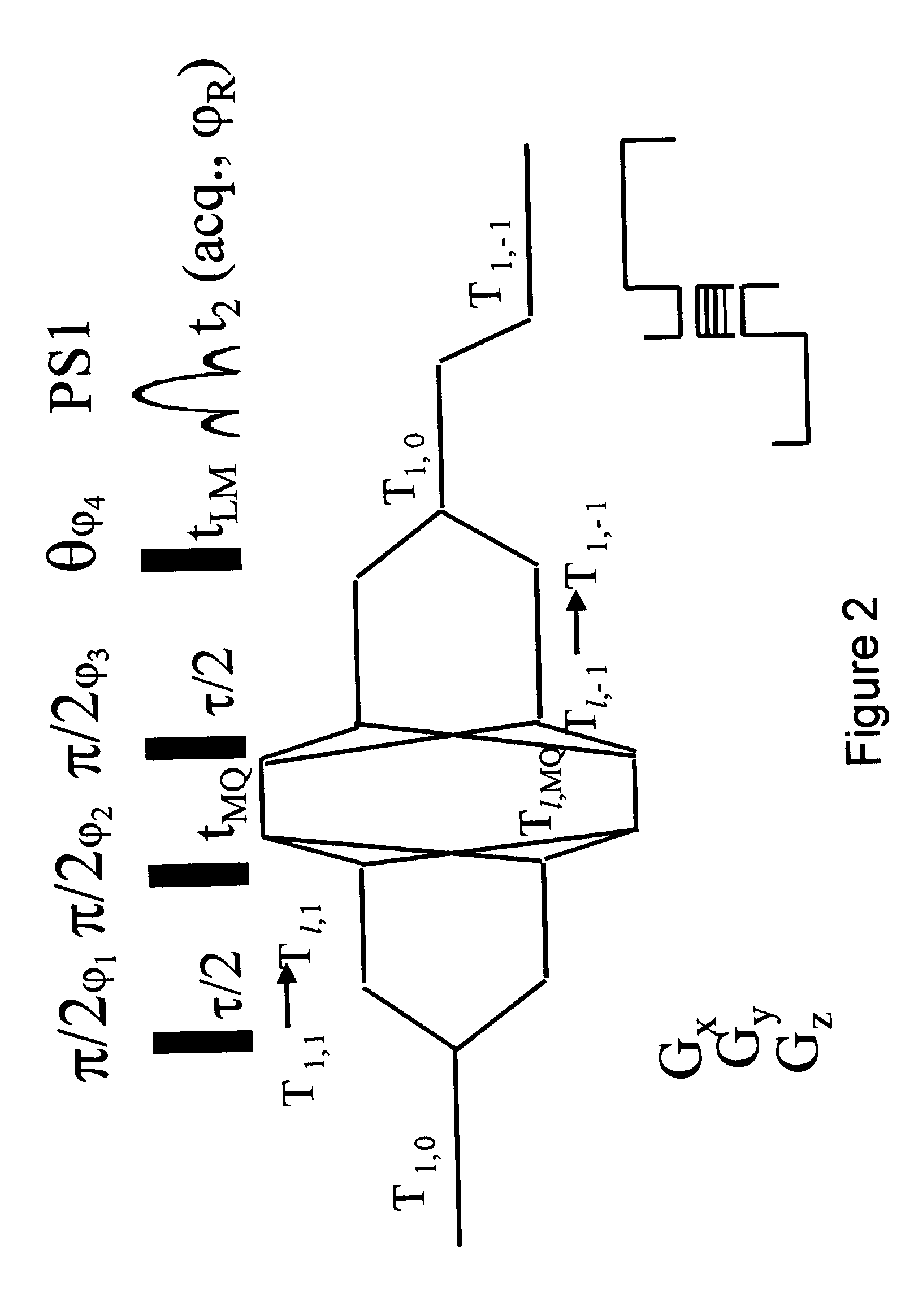Method of selective excitation for improving contrast in magnetic resonance imaging
- Summary
- Abstract
- Description
- Claims
- Application Information
AI Technical Summary
Benefits of technology
Problems solved by technology
Method used
Image
Examples
example 1
Magnetization Transfer from Protein to Water
[0116] The spectra of the water and protein signals as a function of the magnetization transfer period t.sub.LM, according to the present invention, are shown in FIG. 3. The simultaneous rise of the water signal and the decline of the broad protein signal represent the process of magnetization transfer from the protein to the water, within a short period of the order of tens of milliseconds. The effect is further exemplified in FIG. 4 illustrating graphically the dependence of the integrals of the water and protein spectra on the magnetization transfer period t.sub.LM.
[0117] Following the fast magnetization transfer process, both the water and the residual protein signals decay with a rate constant, which is a weighted average of the longitudinal relaxation rates of the water and the protein protons.
example 2
Imaging of an Achilles Tendon and an Articular Cartilage
[0118] For illustrating the contrast obtained by the DQF-MTC imaging method a sample consisted of two types of tissues, bovine Achilles tendon and articular cartilage attached to one another.
[0119] Imaging was conducted on a 360 MHz Bruker WB spectrometer, using the DQF-MTC MRI pulse sequence shown in FIG. 2 with .tau. and t.sub.LM set as 7 .mu.s and 5 .mu.s respectively. The obtained image is shown in FIG. 5. The signals originating from the tendon, which gives in standard MRI a weaker signals than those of the cartilage, become comparable with the latter when imaged in accordance to the teachings of the the present invention.
example 3
Imaging of Mouse Brain
[0120] For illustrating the contrast obtained by the DQF-MTC imaging method a sample tube containing an excised mouse brain was prepared.
[0121] Imaging was conducted on a 360 MHz Brukers Avance spectrometer, using the DQF-MTC MRI pulse sequence shown in FIG. 2.
[0122] FIGS. 6a-d shows the imaging of a mouse brain using two different techniques. FIGS. 6a and 6b are respectively images of a transverse cross section and sagital cross section of a mouse brain, obtained by single quantum gradient echo imaging method. The obtained images provide very little information as the contrast there between the various parts of the brian is low. FIGS. 6c and 6d are the same images obtained using the DQF-MTC MRI method. Contrasts between various areas of the sample are clearly observed.
[0123] It is appreciated that certain features of the invention, which are, for clarity, described in the context of separate embodiments, may also be provided in combination in a single embodime...
PUM
 Login to View More
Login to View More Abstract
Description
Claims
Application Information
 Login to View More
Login to View More - R&D
- Intellectual Property
- Life Sciences
- Materials
- Tech Scout
- Unparalleled Data Quality
- Higher Quality Content
- 60% Fewer Hallucinations
Browse by: Latest US Patents, China's latest patents, Technical Efficacy Thesaurus, Application Domain, Technology Topic, Popular Technical Reports.
© 2025 PatSnap. All rights reserved.Legal|Privacy policy|Modern Slavery Act Transparency Statement|Sitemap|About US| Contact US: help@patsnap.com



